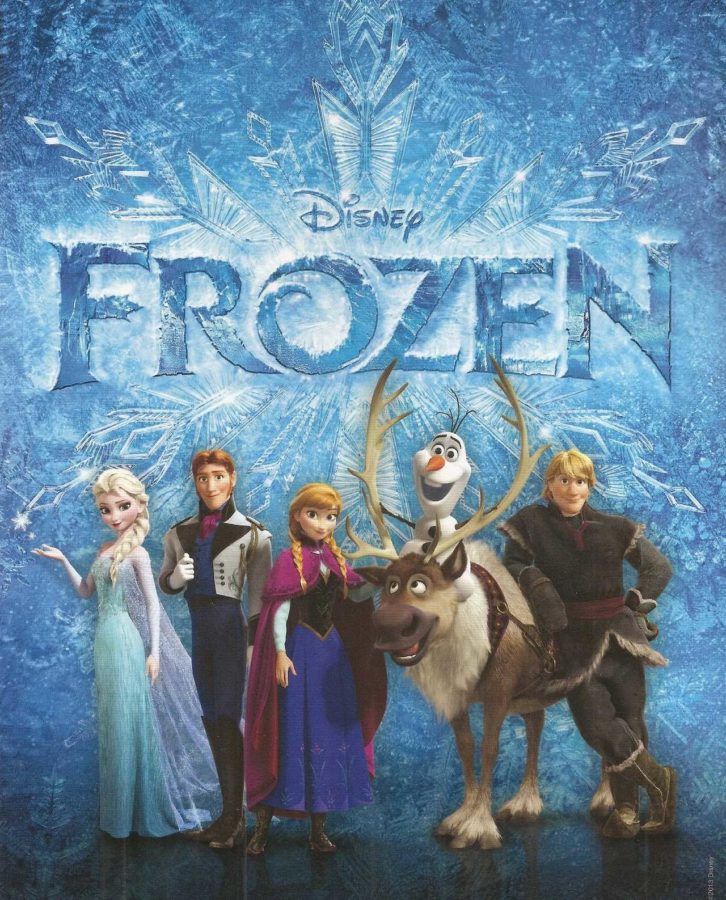For those who have yet to see Disney’s new smash-hit film “Frozen,” a few words of advice. First, the trailers have considerably downplayed the fact that it’s a musical – those who don’t like singing in their movies might want to avoid. Fans of Hans Christian Andersen’s “The Snow Queen,” will be also be disappointed, as the film and the book have so little in common that the credits cite the original novel as an inspiration instead of a source, although those familiar with past Disney adaptations shouldn’t be too surprised by this.
As for everyone else – I have no further complaints or cautions whatsoever. “Frozen” continues the trend set by Disney’s previous movie “Tangled,” in that it’s a fun, witty movie that remind us why we fell in love with Disney movies in the first place.
The plot revolves around Princess Anna and her older sister Elsa, who has the power to create and control snow and ice. How and why she can do this is never explained, as it’s not as important as what happens because of it. The best of friends as children, Elsa is forced to keep her physical and emotional distance least her rapidly growing powers bring harm to the ones she loves, especially after an accident as kids nearly kills Anna. Anna’s memory of Elsa’s magic is erased, but not the good times they used to have, leaving Anna wondering why her beloved older sister doesn’t want to see her anymore, and constantly trying to get Elsa to open up to her. These opening scenes are some of the most memorable, especially when their parents die at sea, as we see Anna’s attempt to reach her sister while Elsa desperately wants to comfort her but dares not let herself get too close.
Years later, Elsa’s powers are revealed on the day of her coronation, causing her to flee in panic while unintentionally blanketing the land in ice and snow. Taking it upon herself to bring back her sister, Elsa sets off with a crude but handsome mountain man and a magically alive snowman who dreams of summer, determined to bring warmth back to the land and maybe in the process heal the rift between the two sisters.
“Frozen’s” biggest strength is how smartly it is put together. The Disney formula has been honed to a perfect sheen here – the dramatic moments hit hard, the jokes all work (mostly), and the songs are memorable, especially Elsa’s coming out ballad “Let it Go,” featuring vocals from accomplished Broadway star Idina Menzel. There are lovable, merchandisable comic characters, of course, but the movie knows to keep them around just long enough to elevate the mood, giving them a quick exit when the more emotional beats happen.
It also knows what parts of the old formula are considered outdated and acts accordingly. The love story found in so many Disney movies is also present here, but it’s examined in more detail then before, subverted in many important ways, and ultimately plays a distant second to the real heart of the movie – the familial love between the two main leads.
The computer animation is gorgeous, especially in the depiction of snow and ice. From frozen droplets hanging from tree to the truly breathtaking ice palace that Elsa builds in her self imposed exile, Disney goes out of it’s way to make what could have been a great deal of flat, white featureless landscapes and making them all individual, dynamic and beautiful to see. The visuals alone are worth the ticket price.
“Frozen” is a beautifully animated, well-written fairy tale that stands tall among classic works in the Disney canon, with a surprisingly progressive message of family bonds over romantic love. It has recently become Disney’s second-highest original animated movie right behind “Finding Nemo” and it more than deserves it. If you’ve ever been a fan of that old Disney magic, you owe it to yourself to see this.


